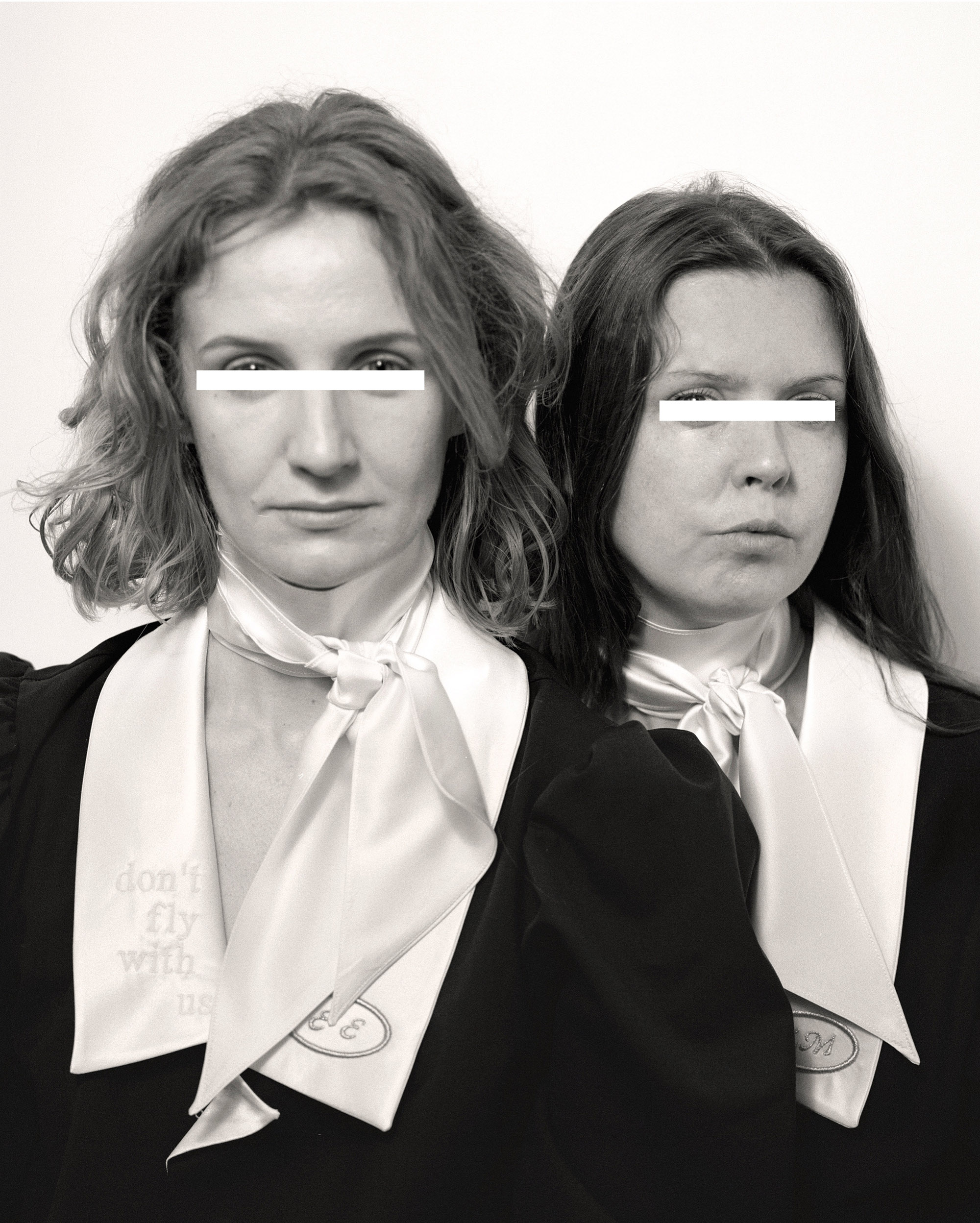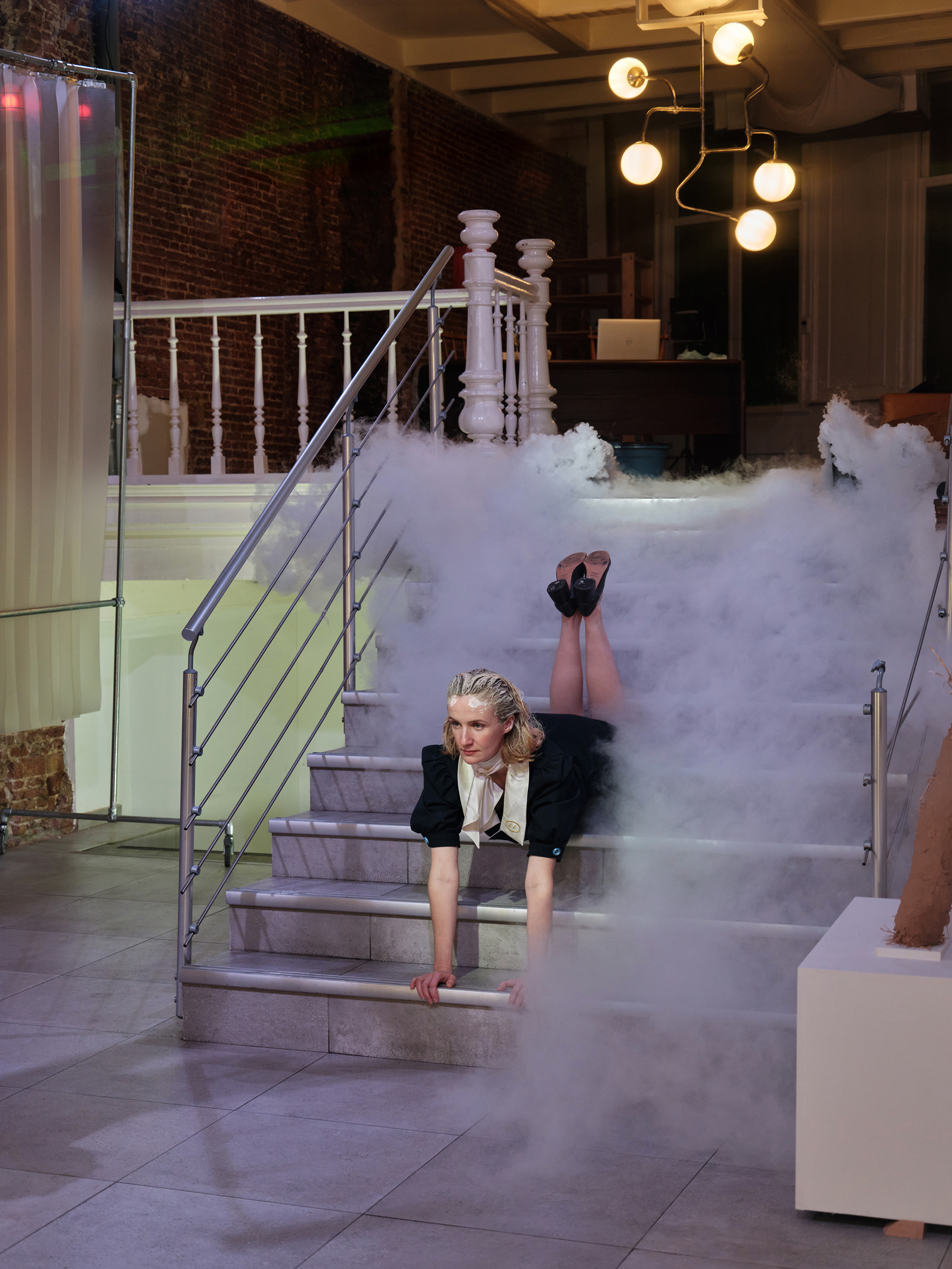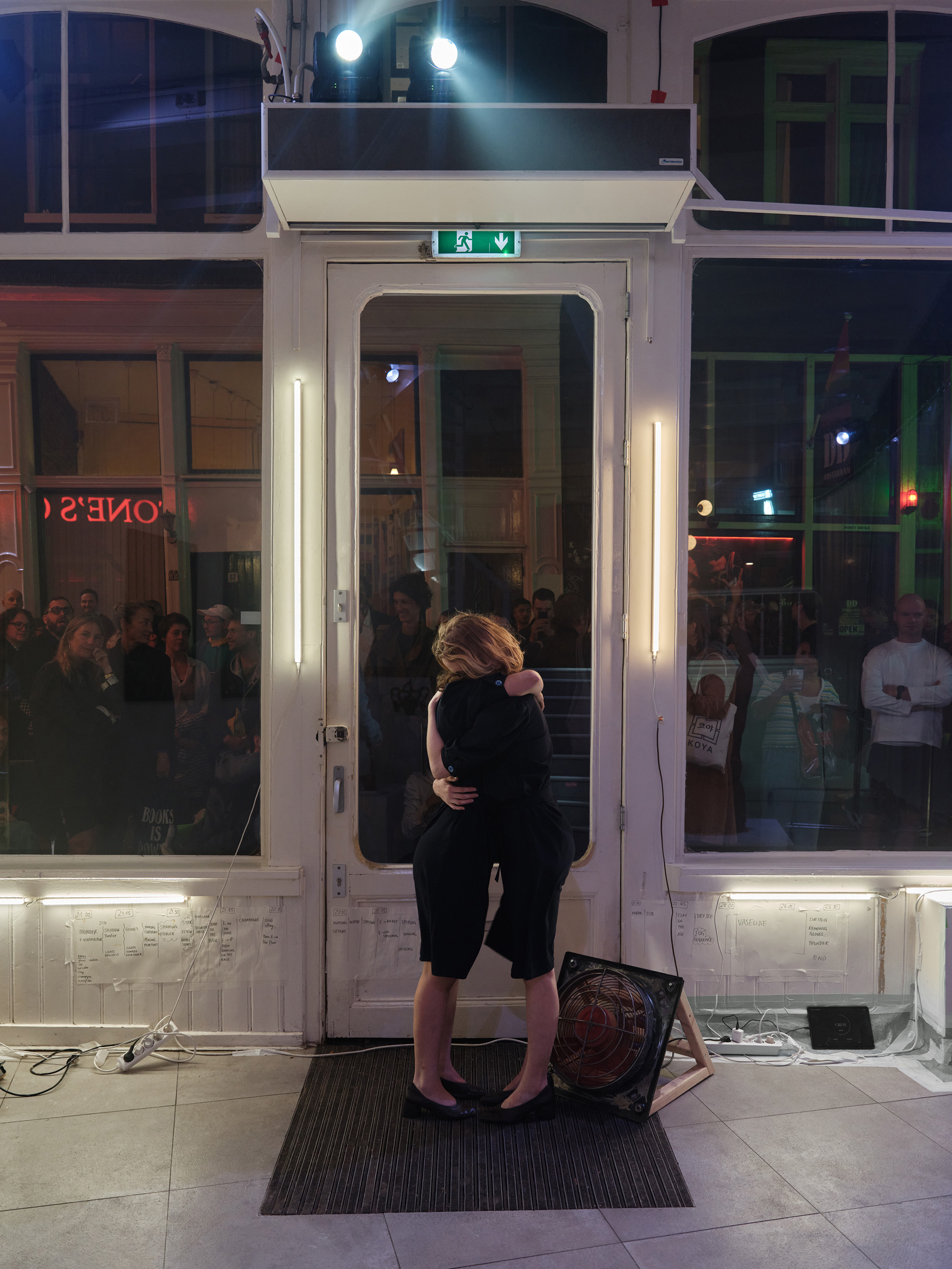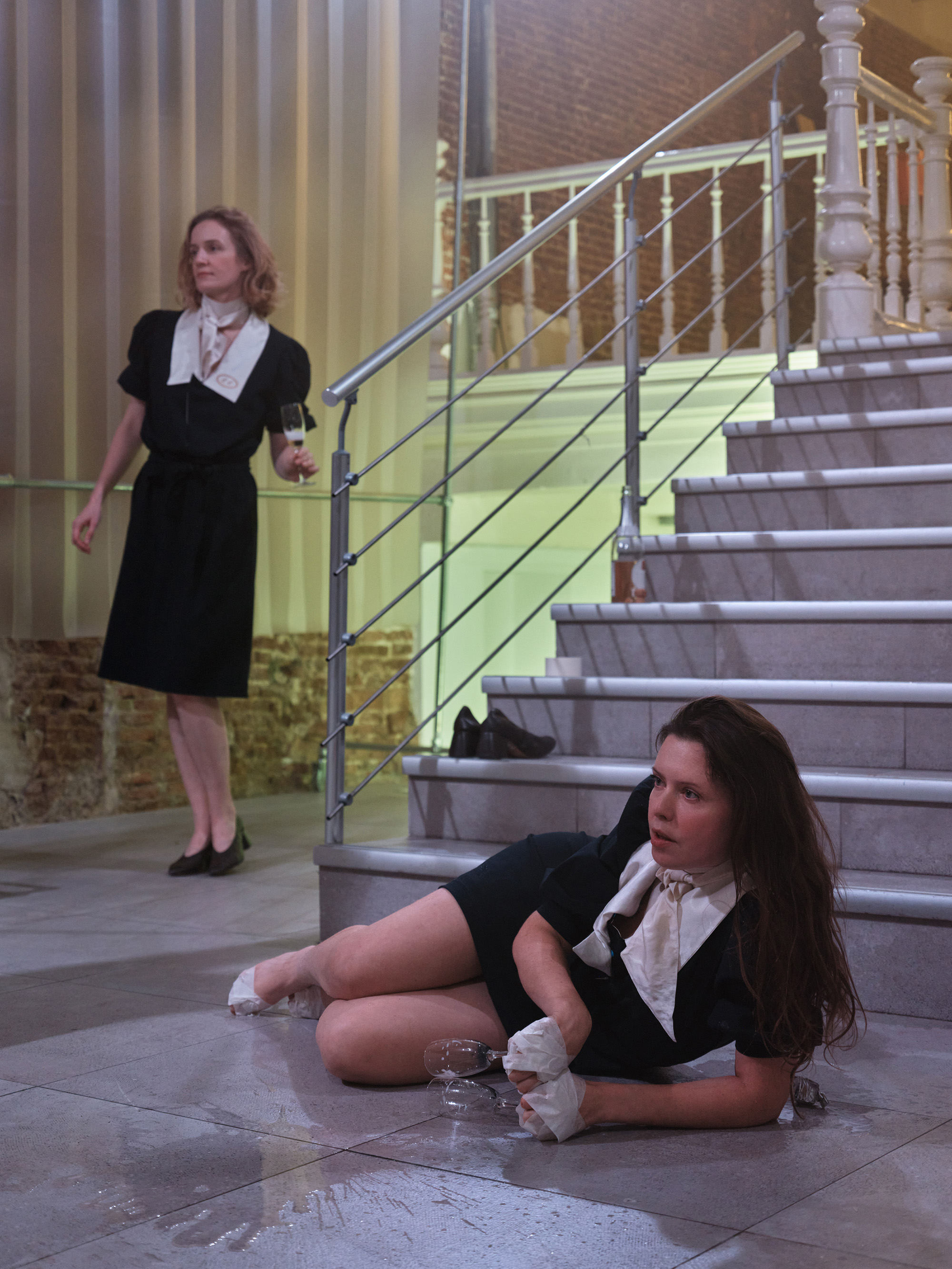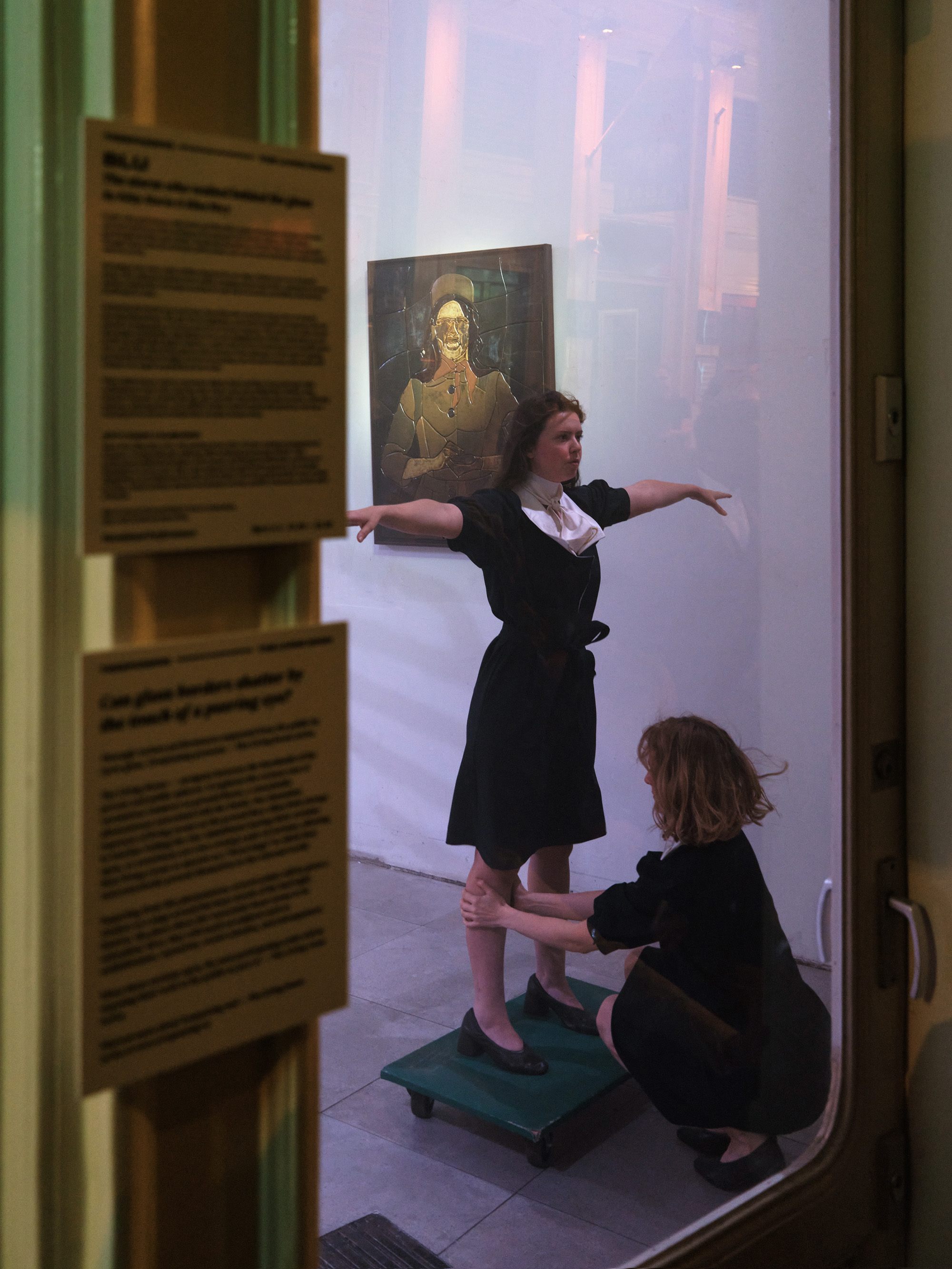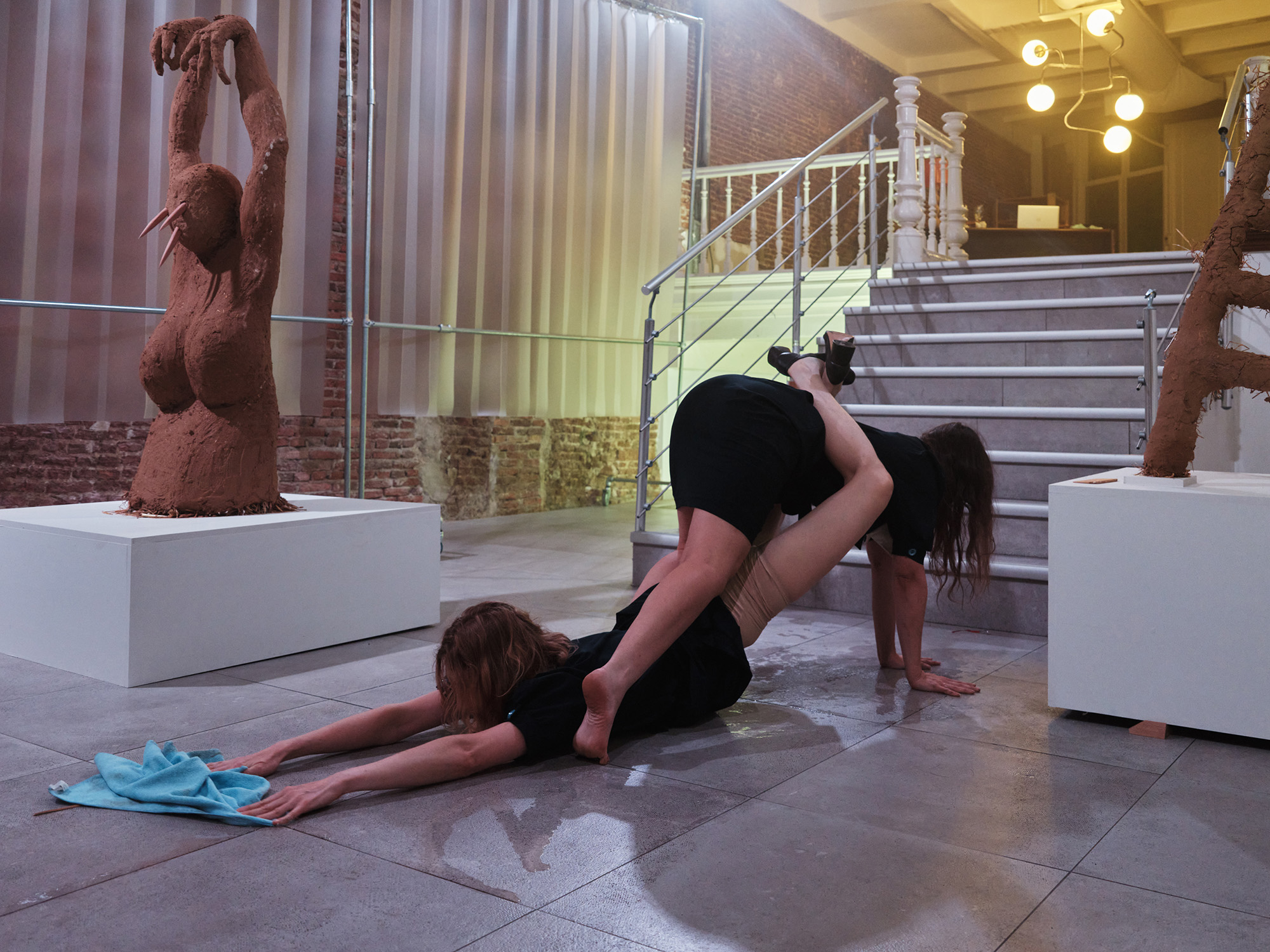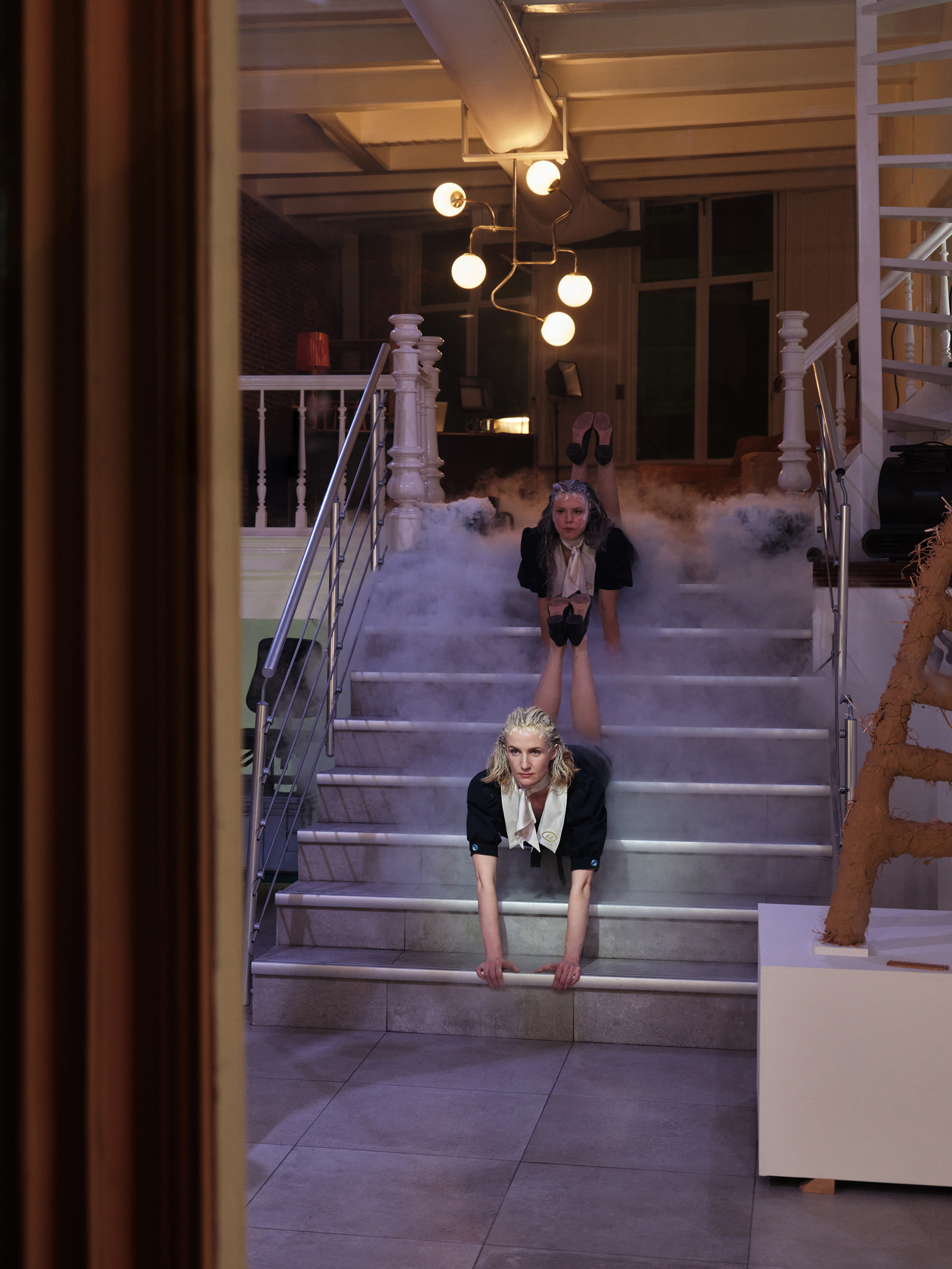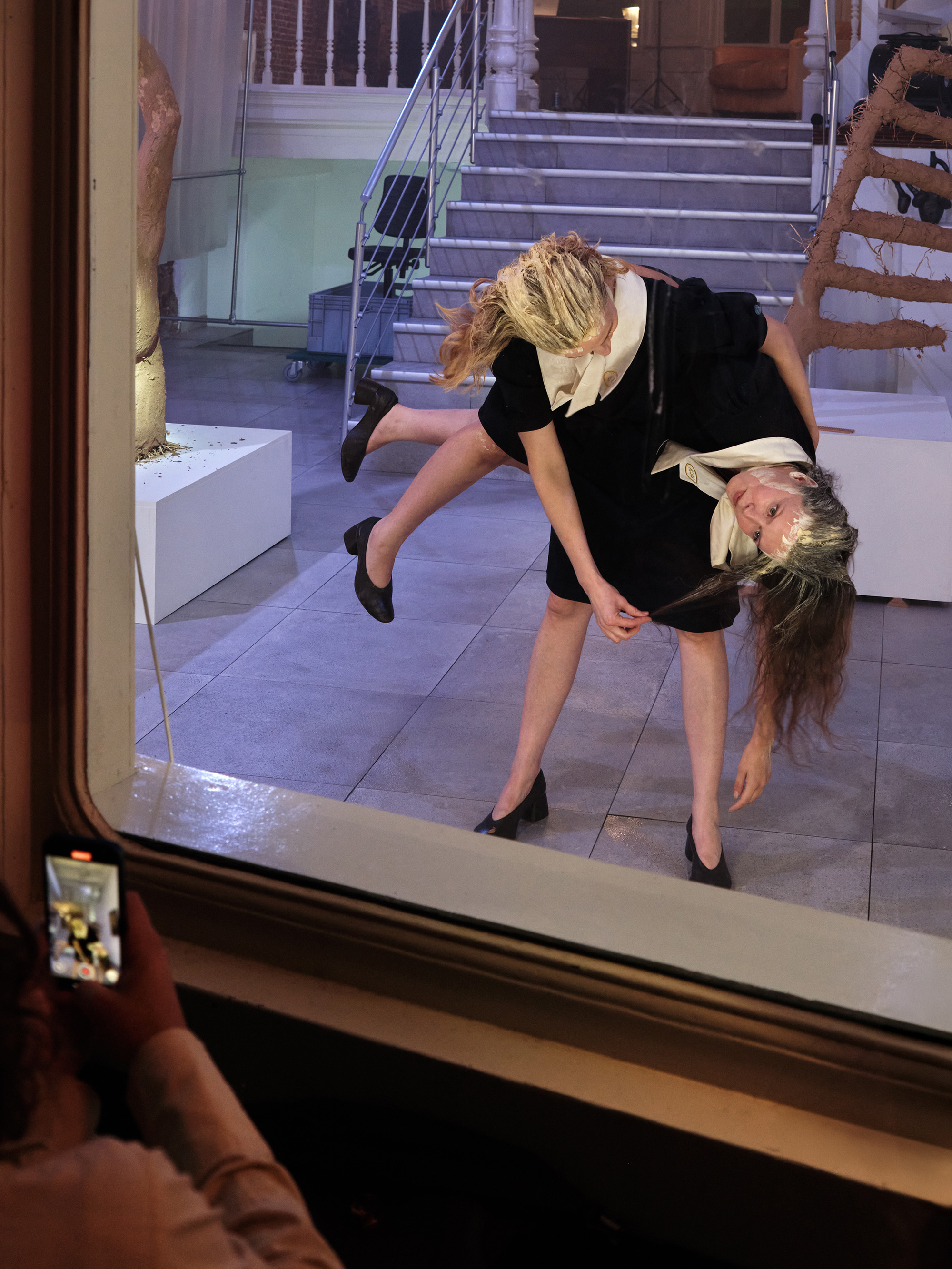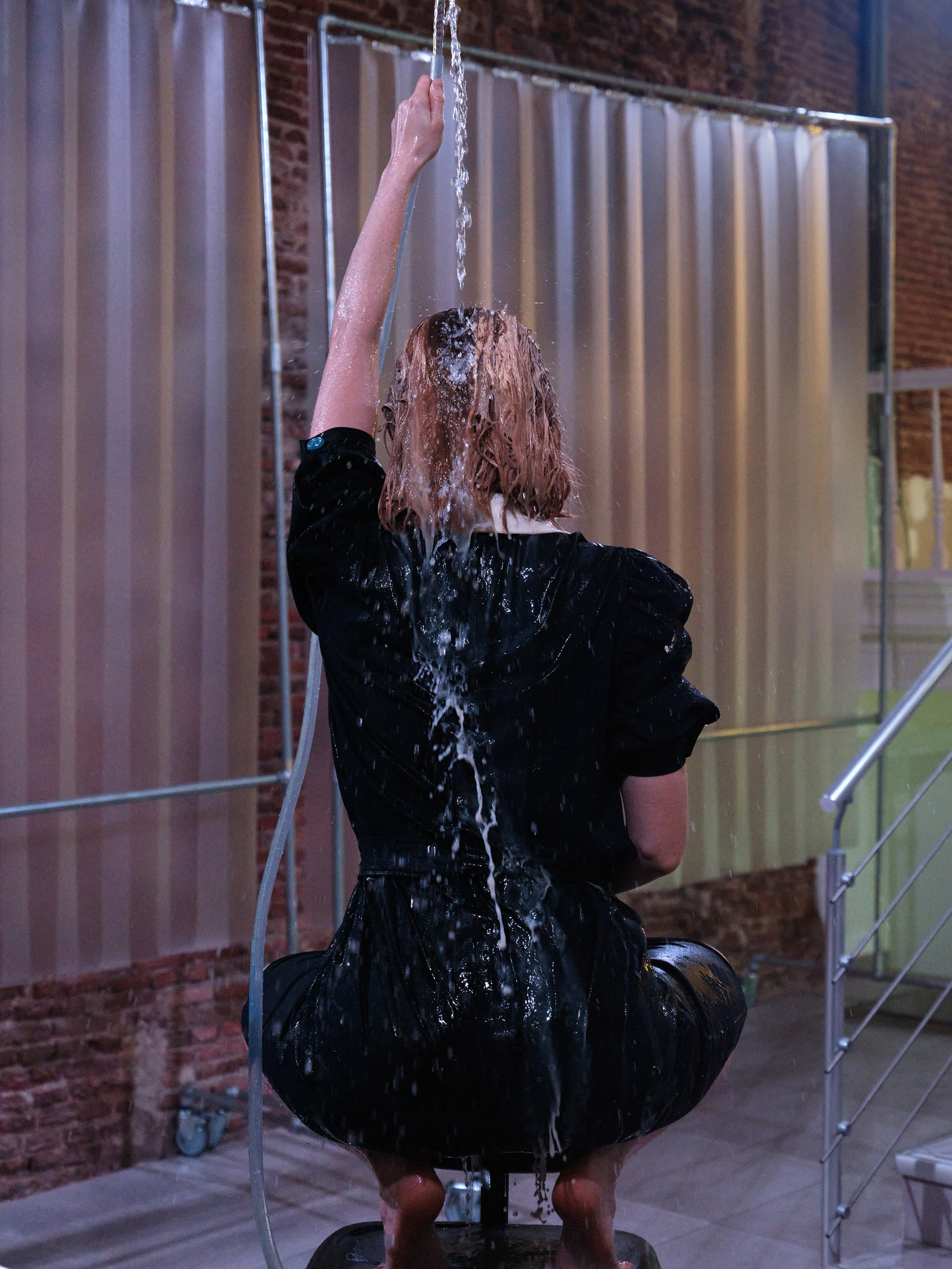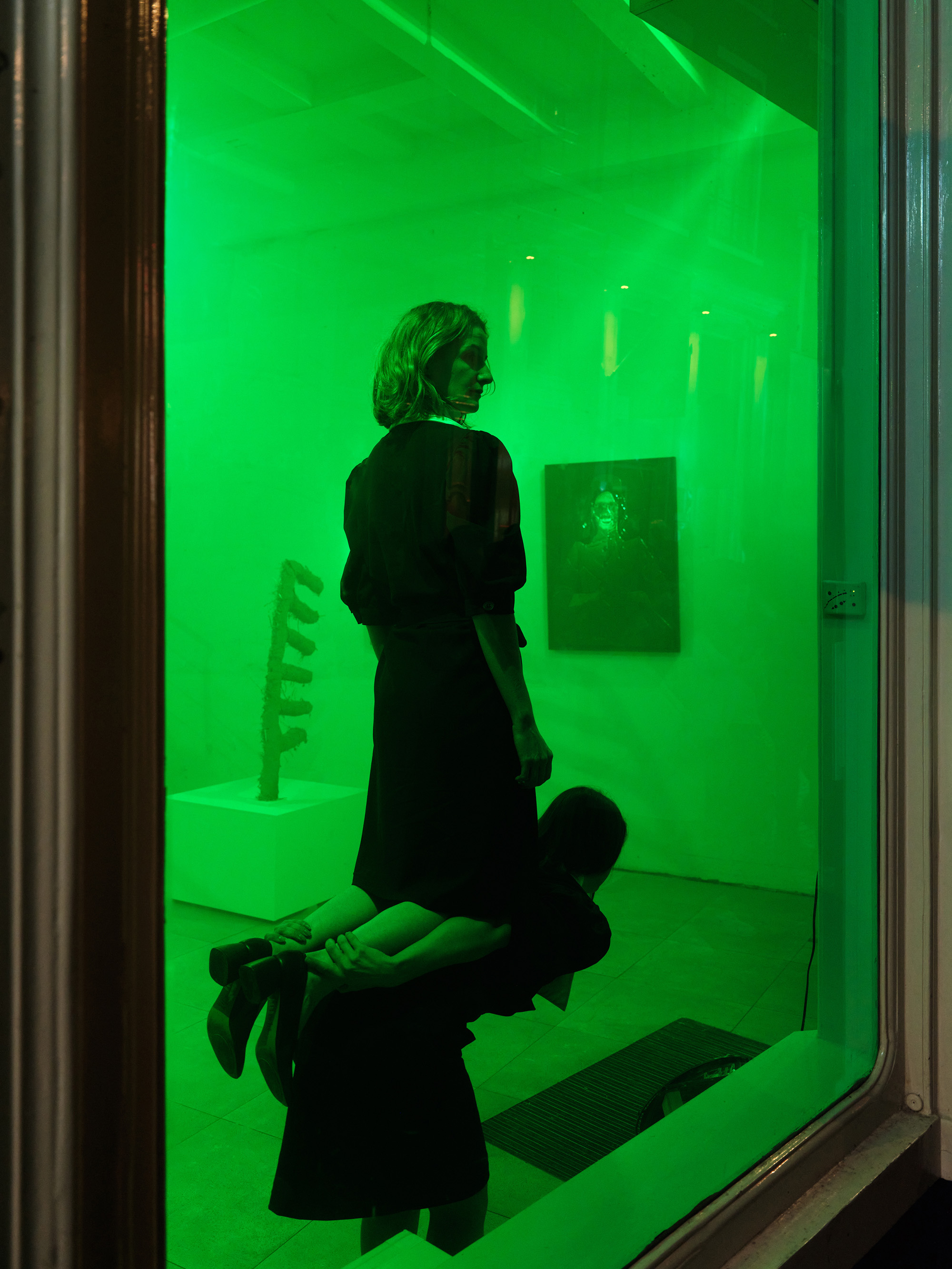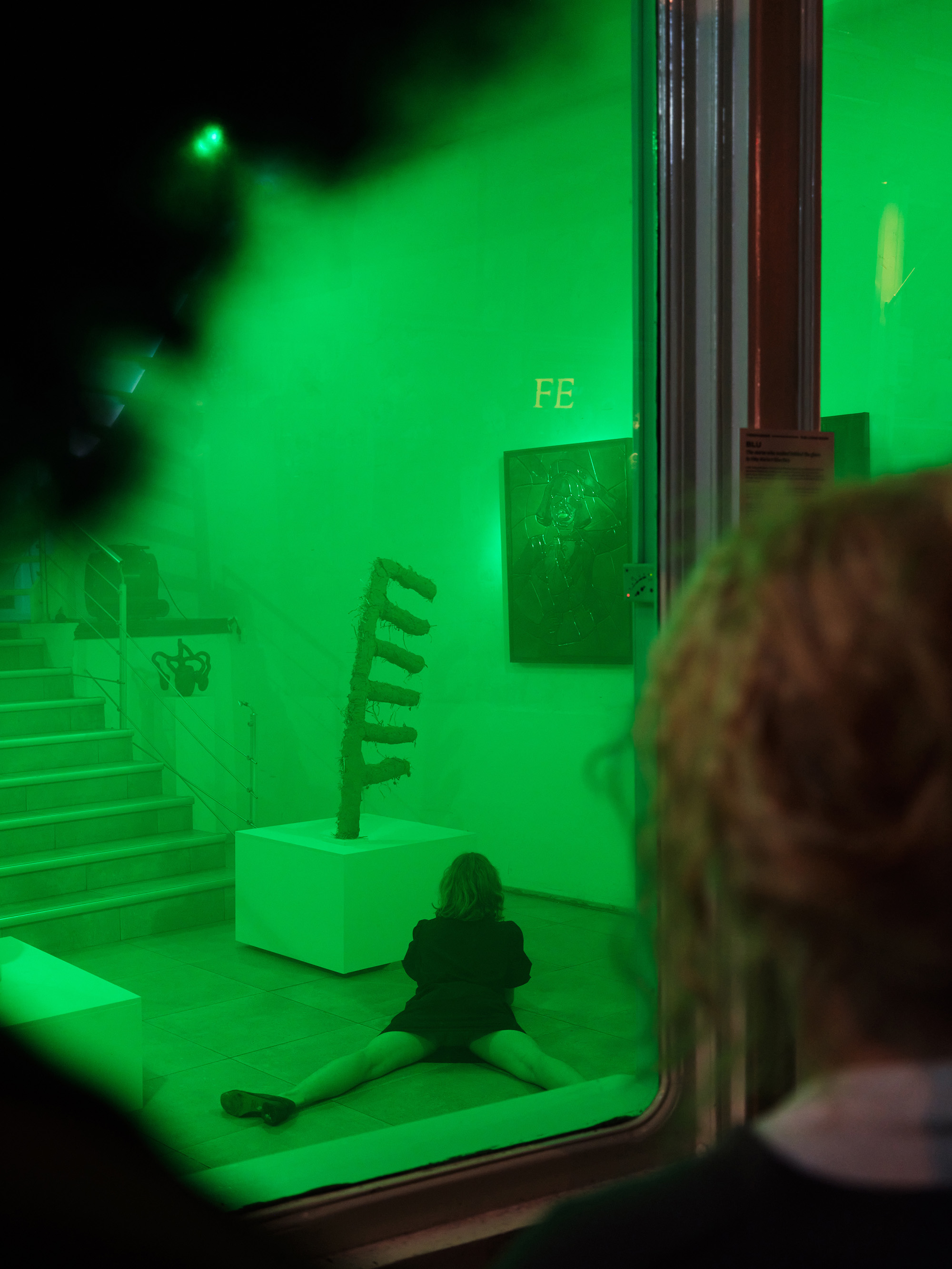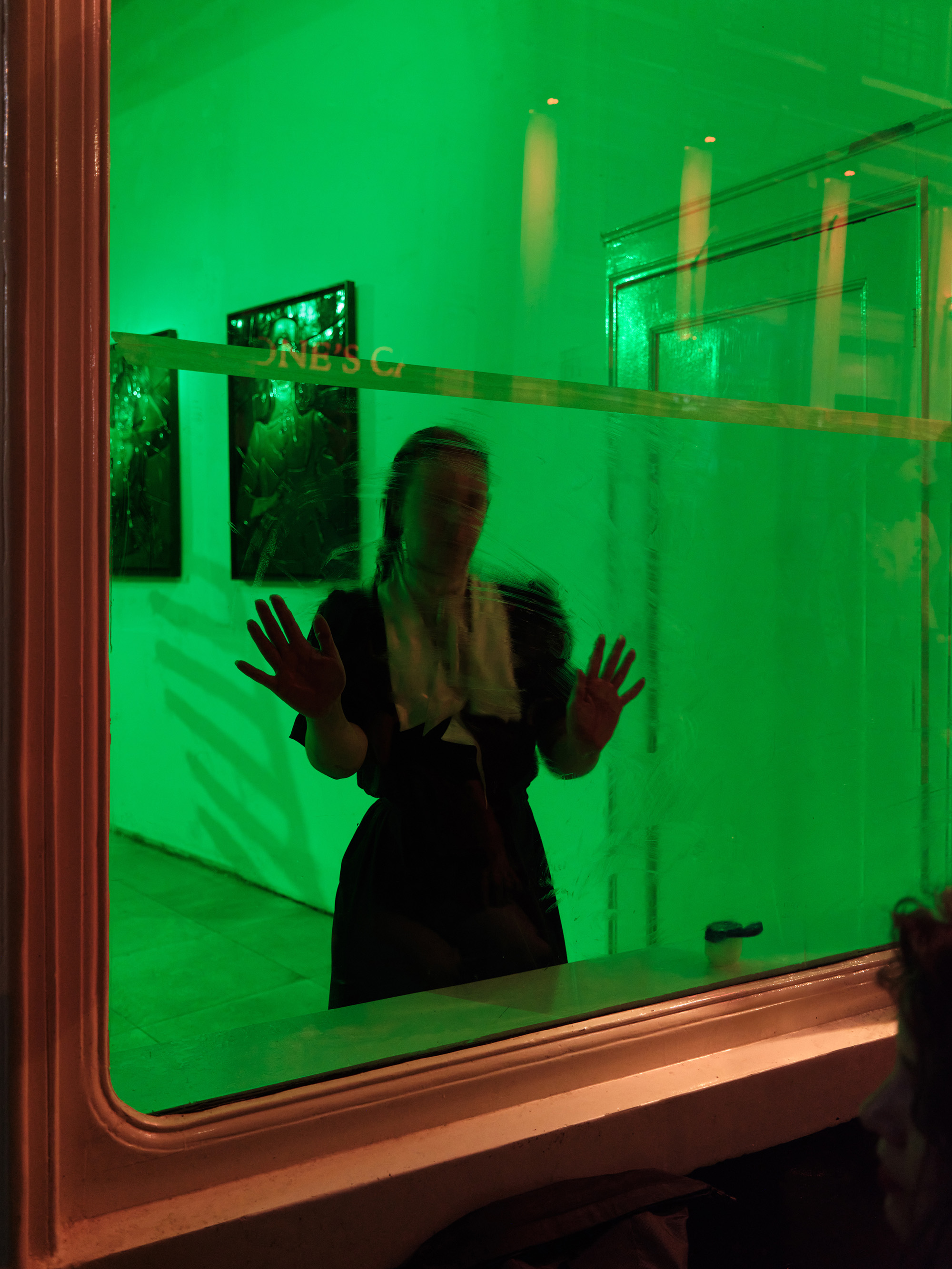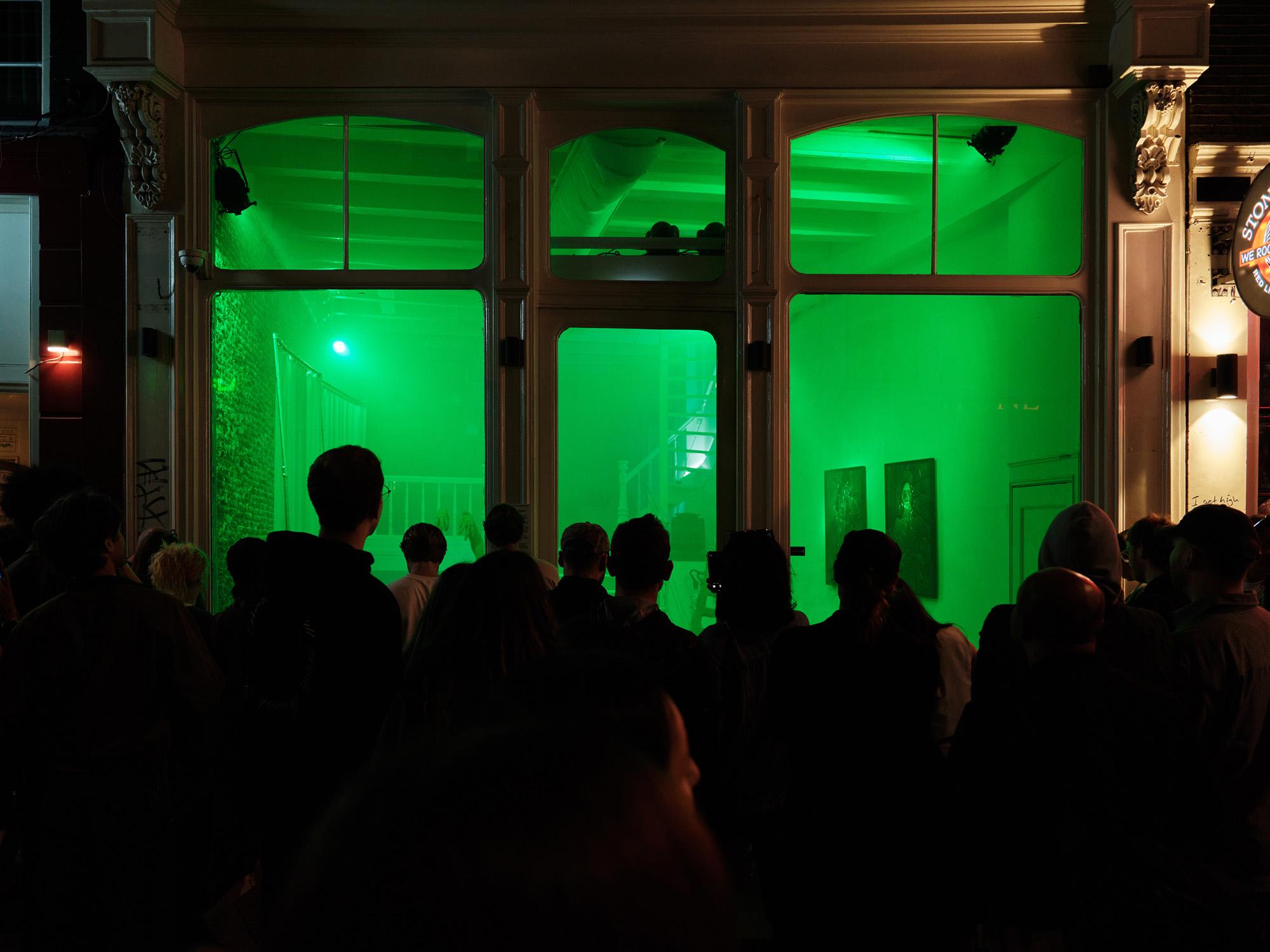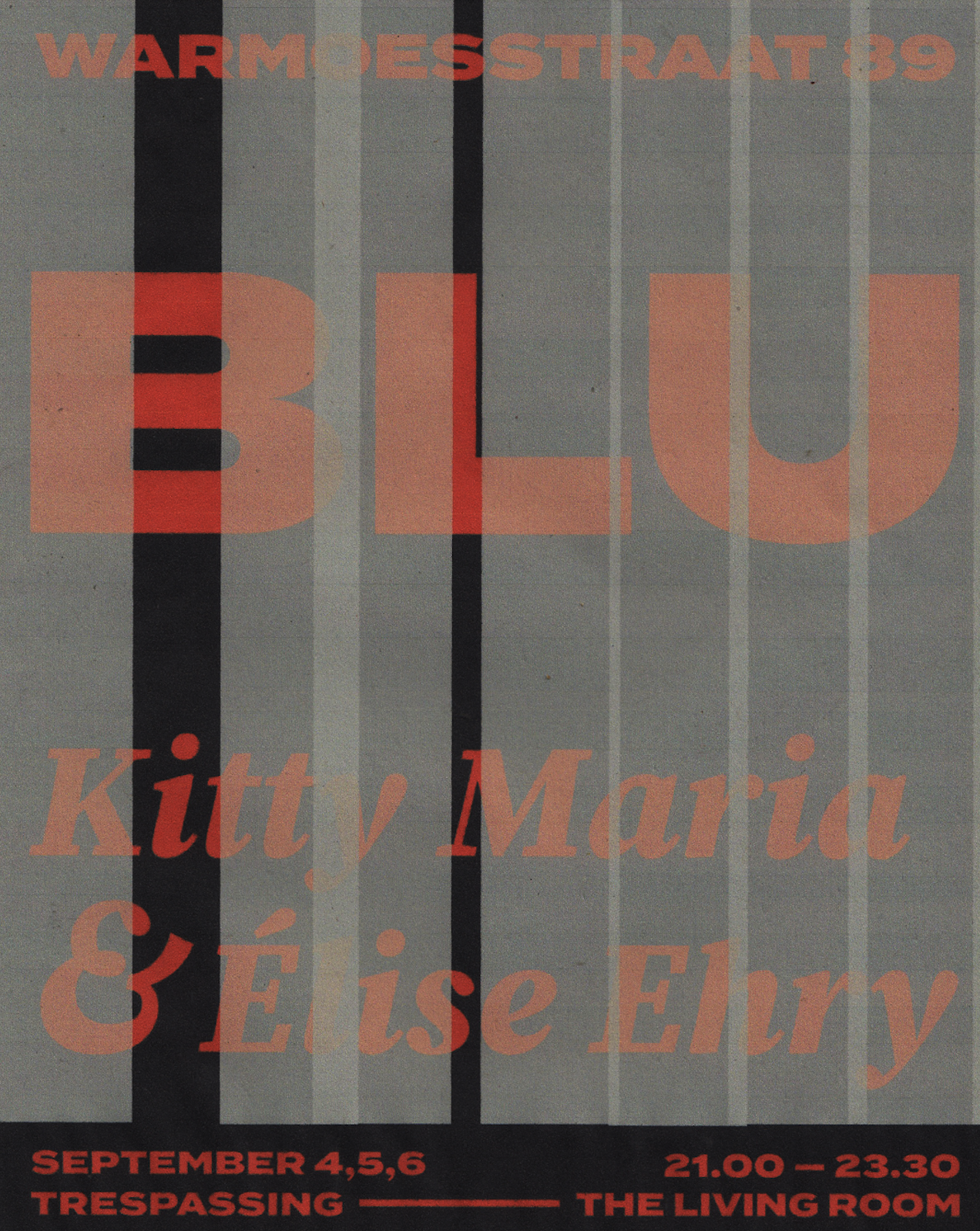
In Blu, Kitty Maria and Élise Ehry restage the suspense and stylised violence of Italian Giallo cinema behind the glass of a window in the city center of Amsterdam.
Giallo is neither strictly a genre nor a single theme, but a set of visual codes and narratives: gloved hands, black trench coats, the murderer’s point of view, and crucial details that remain unseen until it’s too late.
The artists take their inspiration from the opening scene of The Bird with the Crystal Plumage (1970), Dario Argento’s debut film, in which a man witnesses the murder of a woman through an art gallery window, powerless to intervene. This sequence exposes the dark side of the dolce vita and encapsulates an Italy in transformation: cities disoriented by post-war economic boom, rural exodus and urban chaos, which describes the core of Giallo as a psychological thriller.
Élise Ehry and Kitty Maria transpose this tension of unwilling witnessing to the shopfronts of the Red Light District, where windows daily separate crowds from what they watch. During Blu, their shop window becomes a fragile barrier between voyeur and victim.
With the use of cinematic devices, the artists will create new weather conditions as part of the scenes behind their window each day. In doing so, their performance explores the idea of similar invisible forces: cataclysms that are sensed but not seen—storms, traumas, societal upheavals or the invisible pressures of the “glass ceiling.”
The artists ask: how far can cinematic mise-en-scène be stretched into live action and everyday reality, when the shop window becomes their perverse cinema screen? They work playfully with—and against—the recurring Giallo theme of feminicide, in which women’s bodies are objectified and violence is eroticised, mirroring the gaze of many tourists in the hyper-touristic Red Light District.
By placing their own bodies in these spaces, they disrupt this gaze, creating a feminist re-enactment that reclaims Giallo’s visual codes while subverting its patriarchal narratives. In doing so, they expose the voyeurism and systemic violence underlying these stories, using both artifice and humour.
Performers
Kitty Maria & Élise Ehry
